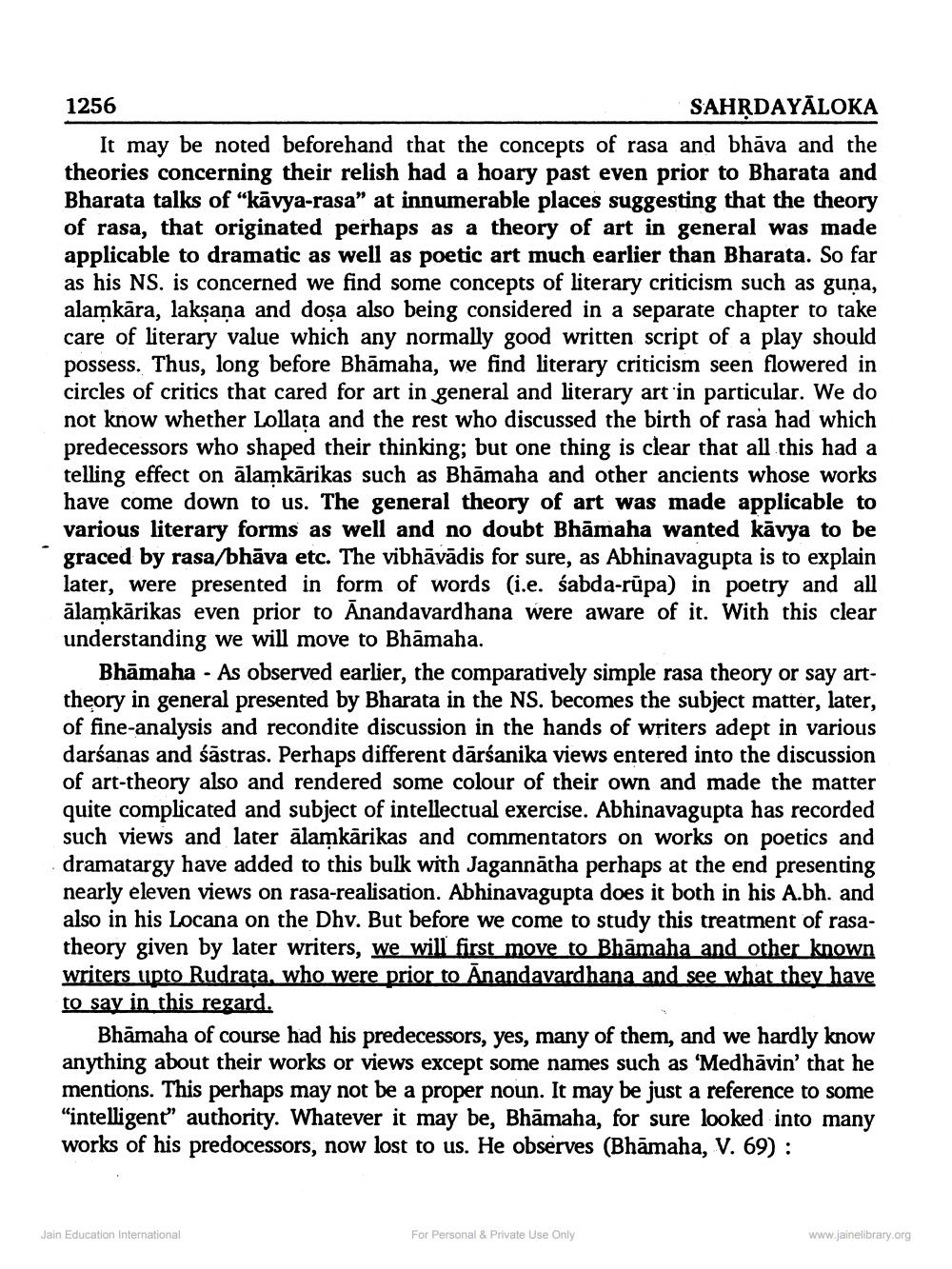________________
1256
SAHṚDAYĀLOKA It may be noted beforehand that the concepts of rasa and bhāva and the theories concerning their relish had a hoary past even prior to Bharata and Bharata talks of "kavya-rasa" at innumerable places suggesting that the theory of rasa, that originated perhaps as a theory of art in general was made applicable to dramatic as well as poetic art much earlier than Bharata. So far as his NS. is concerned we find some concepts of literary criticism such as guna, alamkāra, lakṣaṇa and dosa also being considered in a separate chapter to take care of literary value which any normally good written script of a play should possess. Thus, long before Bhāmaha, we find literary criticism seen flowered in circles of critics that cared for art in general and literary art in particular. We do not know whether Lollata and the rest who discussed the birth of rasa had which predecessors who shaped their thinking; but one thing is clear that all this had a telling effect on alamkarikas such as Bhamaha and other ancients whose works have come down to us. The general theory of art was made applicable to various literary forms as well and no doubt Bhāmaha wanted kavya to be graced by rasa/bhāva etc. The vibhāvādis for sure, as Abhinavagupta is to explain later, were presented in form of words (i.e. sabda-rupa) in poetry and all ālamkarikas even prior to Anandavardhana were aware of it. With this clear understanding we will move to Bhāmaha.
Bhāmaha - As observed earlier, the comparatively simple rasa theory or say arttheory in general presented by Bharata in the NS. becomes the subject matter, later, of fine-analysis and recondite discussion in the hands of writers adept in various darśanas and śāstras. Perhaps different dārśanika views entered into the discussion of art-theory also and rendered some colour of their own and made the matter quite complicated and subject of intellectual exercise. Abhinavagupta has recorded such views and later ālamkarikas and commentators on works on poetics and dramatargy have added to this bulk with Jagannatha perhaps at the end presenting nearly eleven views on rasa-realisation. Abhinavagupta does it both in his A.bh. and also in his Locana on the Dhv. But before we come to study this treatment of rasatheory given by later writers, we will first move to Bhāmaha and other known writers upto Rudrața, who were prior to Anandavardhana and see what they have to say in this regard.
Bhamaha of course had his predecessors, yes, many of them, and we hardly know anything about their works or views except some names such as 'Medhāvin' that he mentions. This perhaps may not be a proper noun. It may be just a reference to some "intelligent" authority. Whatever it may be, Bhāmaha, for sure looked into many works of his predocessors, now lost to us. He observes (Bhamaha, V. 69):
Jain Education International
For Personal & Private Use Only
www.jainelibrary.org




